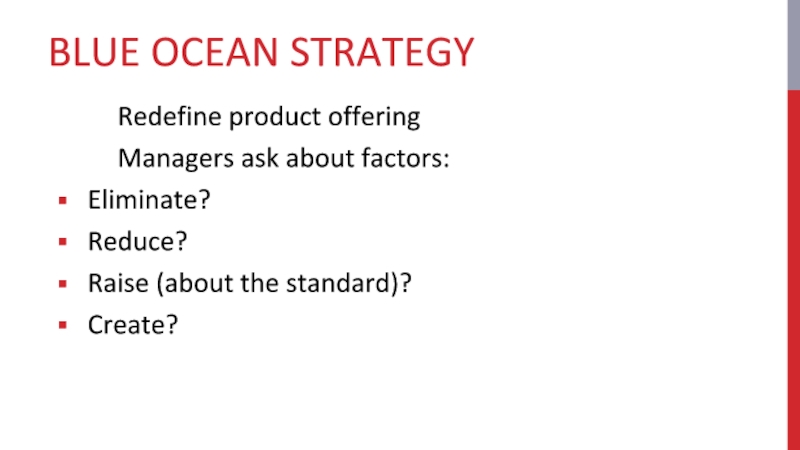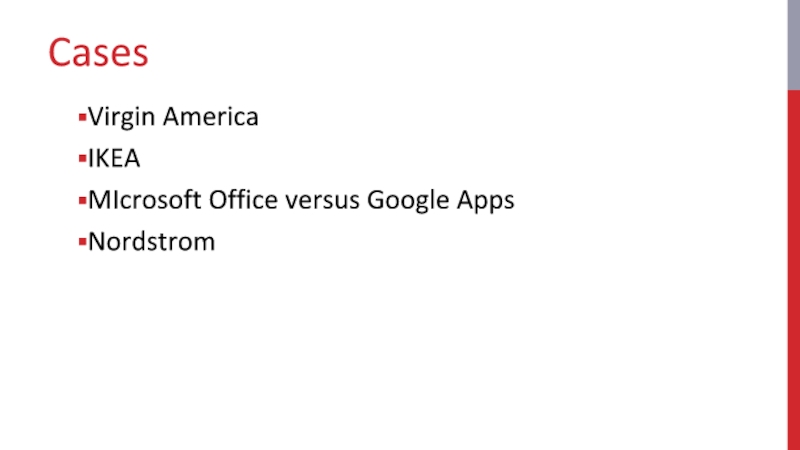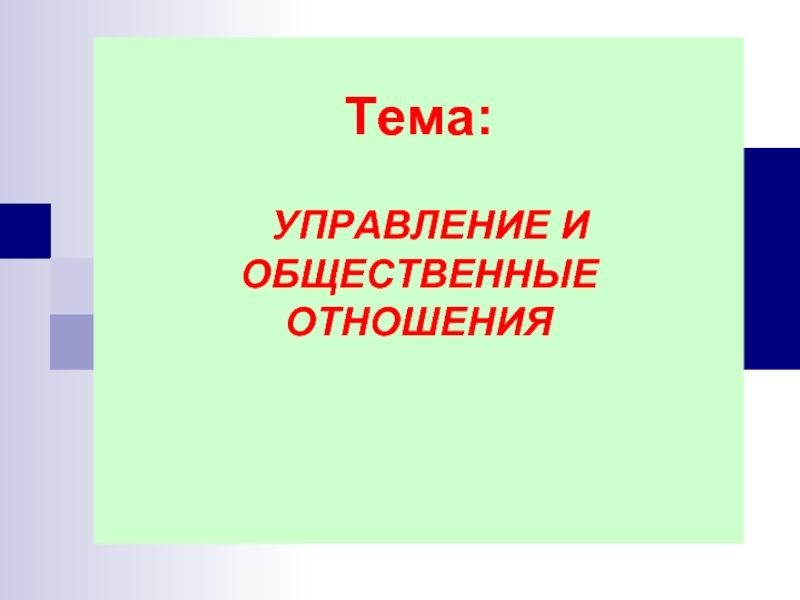- Главная
- Разное
- Дизайн
- Бизнес и предпринимательство
- Аналитика
- Образование
- Развлечения
- Красота и здоровье
- Финансы
- Государство
- Путешествия
- Спорт
- Недвижимость
- Армия
- Графика
- Культурология
- Еда и кулинария
- Лингвистика
- Английский язык
- Астрономия
- Алгебра
- Биология
- География
- Детские презентации
- Информатика
- История
- Литература
- Маркетинг
- Математика
- Медицина
- Менеджмент
- Музыка
- МХК
- Немецкий язык
- ОБЖ
- Обществознание
- Окружающий мир
- Педагогика
- Русский язык
- Технология
- Физика
- Философия
- Химия
- Шаблоны, картинки для презентаций
- Экология
- Экономика
- Юриспруденция
HSJ Chapter 5. Business-Level Strategy презентация
Содержание
- 1. HSJ Chapter 5. Business-Level Strategy
- 2. BUSINESS-LEVEL STRATEGY Overall competitive theme of a
- 3. THE TWO FUNDAMENTAL STRATEGIES Low Cost Differentiation
- 4. LOWERING COSTS Enables a company to: gain
- 5. DIFFERENTIATION Distinguishing oneself from rivals by offering
- 6. DIFFERENTIATION Advantages Allows a company to charge
- 9. THE DIFF./LOW-COST TRADEOFF Efficiency frontier Shows all
- 10. THE DIFF./LOW-COST TRADEOFF To get to the
- 11. VALUE INNOVATION Occurs when innovations push out
- 13. MARKET SEGMENTATION Decision of a company to
- 14. MARKET SEGMENTATION Standardization strategy (no segmentation) Segmentation
- 15. COSTS AND CUSTOMIZATION Normally customization > greater
- 16. COST REDUCTION: TWO APPROACHES Costco: 4K SKUs Wal-Mart: 142K SKUs
- 17. GENERIC BUSINESS-LEVEL STRATEGIES
- 18. GENERIC BUSINESS-LEVEL STRATEGIES
- 20. BLUE OCEAN STRATEGY Value Innovation: Creating a
- 21. BLUE OCEAN STRATEGY Redefine product offering Managers
- 22. Cases Virgin America IKEA MIcrosoft Office versus Google Apps Nordstrom
Слайд 2BUSINESS-LEVEL STRATEGY
Overall competitive theme of a business.
Whom to serve
Needs and desires
trying to satisfy
How to satisfy
How to satisfy
Слайд 4LOWERING COSTS
Enables a company to:
gain a competitive advantage in commodity markets.
undercut
rivals on price.
gain market share.
maintain or increase profitability.
gain market share.
maintain or increase profitability.
Слайд 5DIFFERENTIATION
Distinguishing oneself from rivals by offering something that they find hard
to match .
Product differentiation is achieved through:
superior reliability, functions, and features.
better design, branding, point-of-sale service, after sales service, and support.
Product differentiation is achieved through:
superior reliability, functions, and features.
better design, branding, point-of-sale service, after sales service, and support.
Слайд 6DIFFERENTIATION
Advantages
Allows a company to charge a premium price.
Helps a company to
grow overall demand and capture market share from its rivals.
Слайд 9THE DIFF./LOW-COST TRADEOFF
Efficiency frontier
Shows all the positions a company can adopt
with regard to differentiation and low cost.
Has a convex shape because of diminishing returns.
Multiple positions on the differentiation-low cost continuum are viable.
Have enough demand to support an offering.
Has a convex shape because of diminishing returns.
Multiple positions on the differentiation-low cost continuum are viable.
Have enough demand to support an offering.
Слайд 10THE DIFF./LOW-COST TRADEOFF
To get to the efficiency frontier, a company must:
pursue
the right functional-level strategies.
be properly organized.
ensure its business-level strategy, functional-level strategy, and organizational arrangement align with each other.
be properly organized.
ensure its business-level strategy, functional-level strategy, and organizational arrangement align with each other.
Слайд 11VALUE INNOVATION
Occurs when innovations push out the efficiency frontier in an
industry, enabling greater value to be offered through superior differentiation.
At a lower cost than was thought possible.
Enable a company to outperform its rivals for a long period of time.
At a lower cost than was thought possible.
Enable a company to outperform its rivals for a long period of time.
Слайд 13MARKET SEGMENTATION
Decision of a company to group customers based on important
differences in their needs to gain a competitive advantage.
Standardization strategy - Producing a standardized product for the average customer, ignoring different segments.
Standardization strategy - Producing a standardized product for the average customer, ignoring different segments.
Слайд 14MARKET SEGMENTATION
Standardization strategy (no segmentation)
Segmentation strategy - Producing different offerings for
different segments, serving many segments or the entire market.
Focus strategy - Serving a limited number of segments or just one segment.
Focus strategy - Serving a limited number of segments or just one segment.
Слайд 15COSTS AND CUSTOMIZATION
Normally customization > greater costs
Costs reduced by
Mass customization
Textbook examples
in Ch. 4: Dell; M&Ms; Pandora
Component sharing
Component sharing
Слайд 20BLUE OCEAN STRATEGY
Value Innovation: Creating a new market space
Southwest Airlines
[From TIME
article:] Stock appreciation from 1978 to 2016: 53,700% return (S&P: 2,300% return)
Jan 2016 to present: NYSE Airline index is up 3%; Southwest down by 4%
Jan 2016 to present: NYSE Airline index is up 3%; Southwest down by 4%


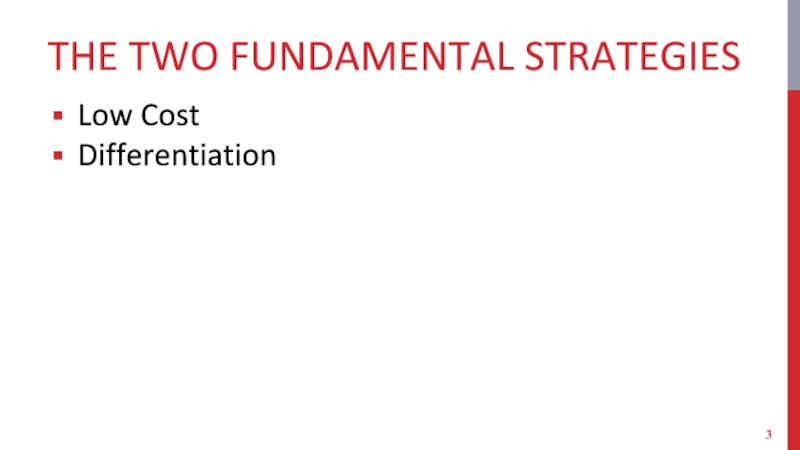
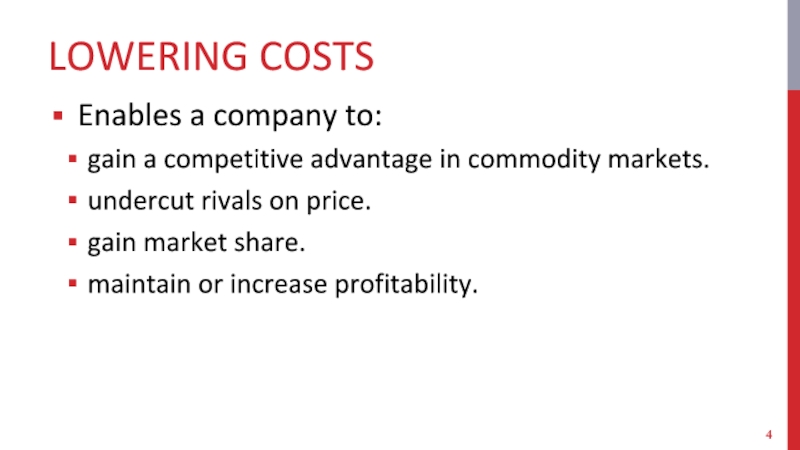
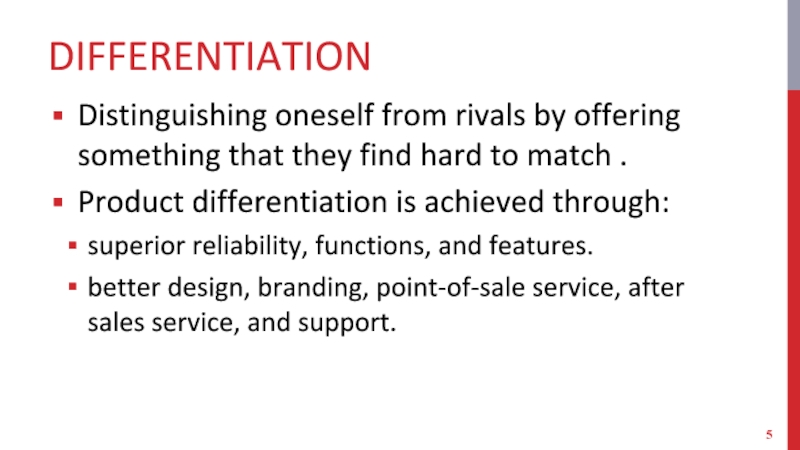
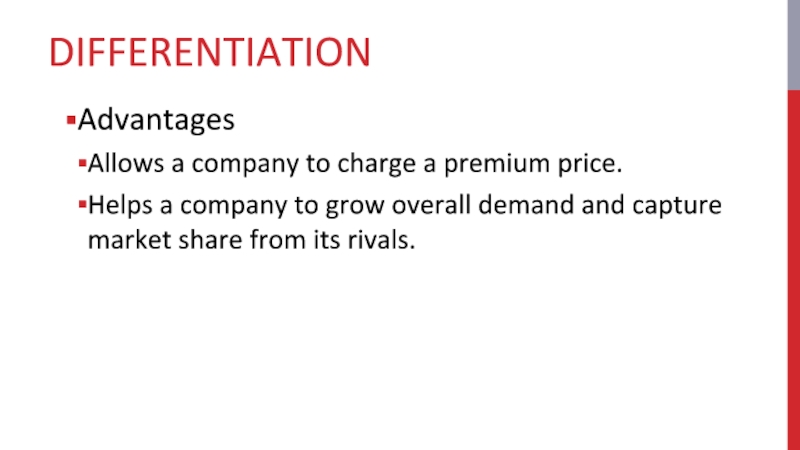
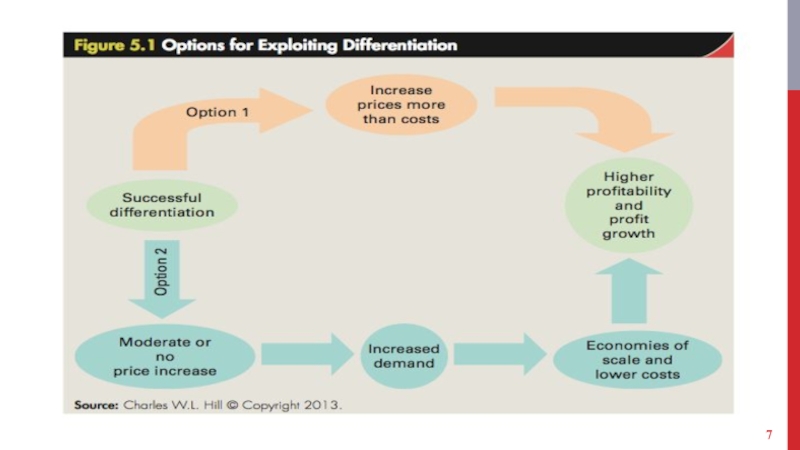
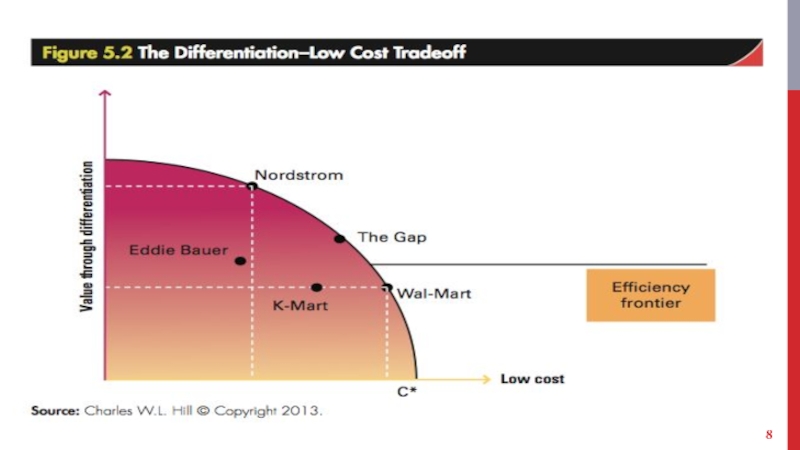

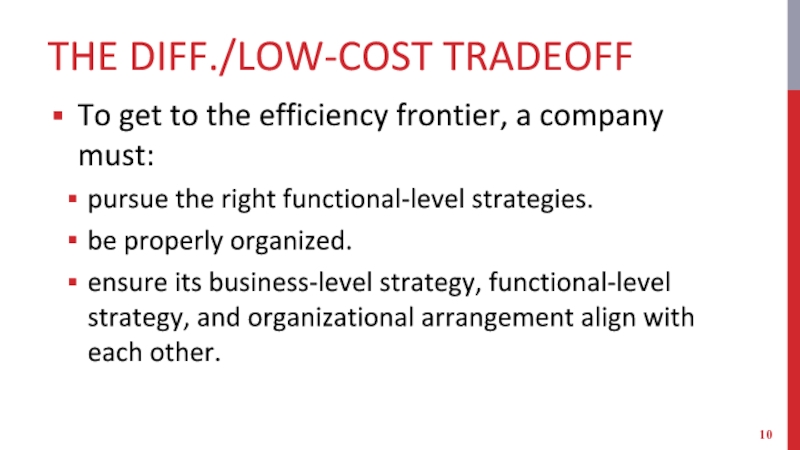

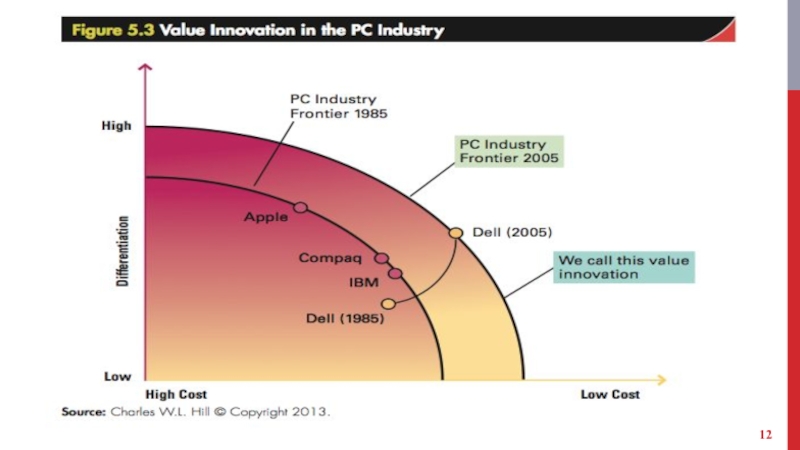
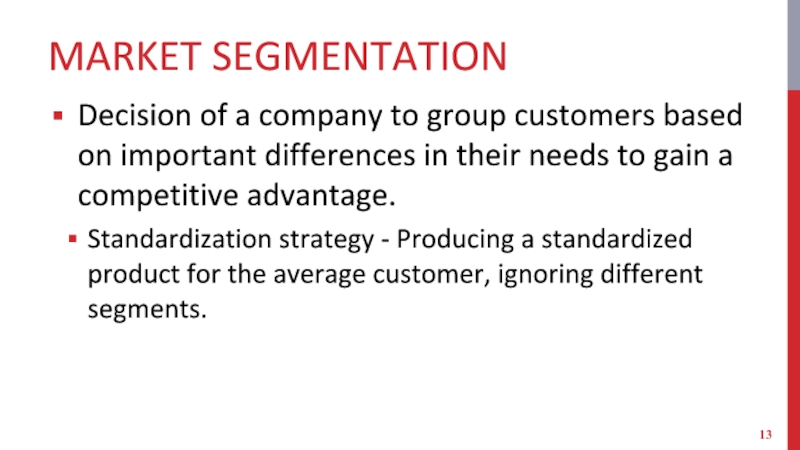
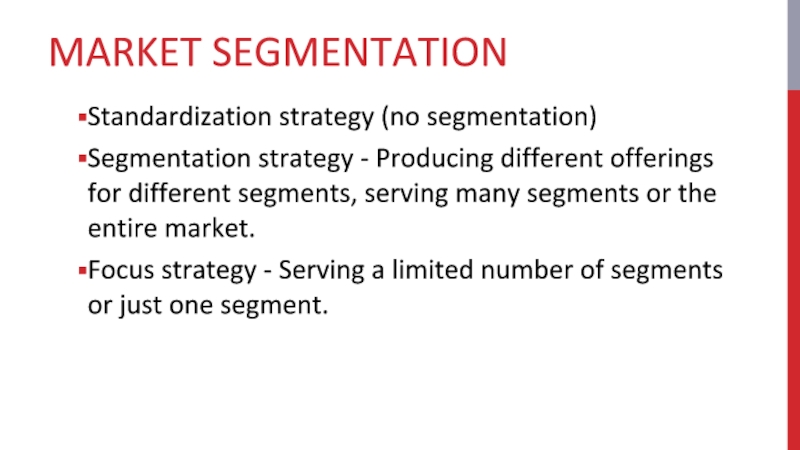
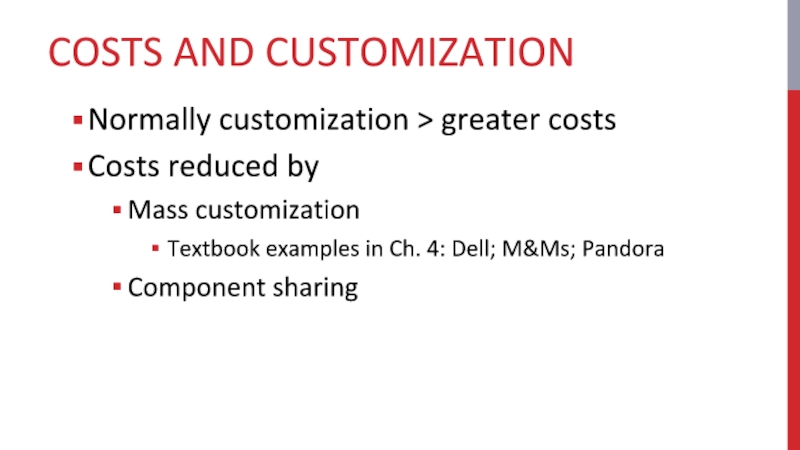
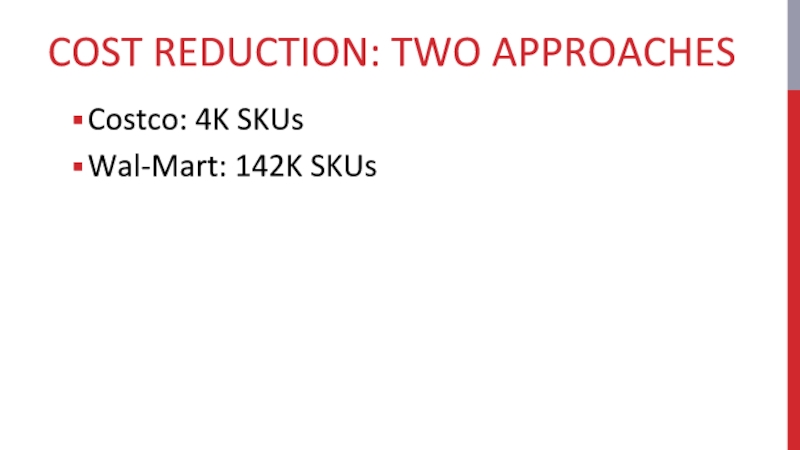
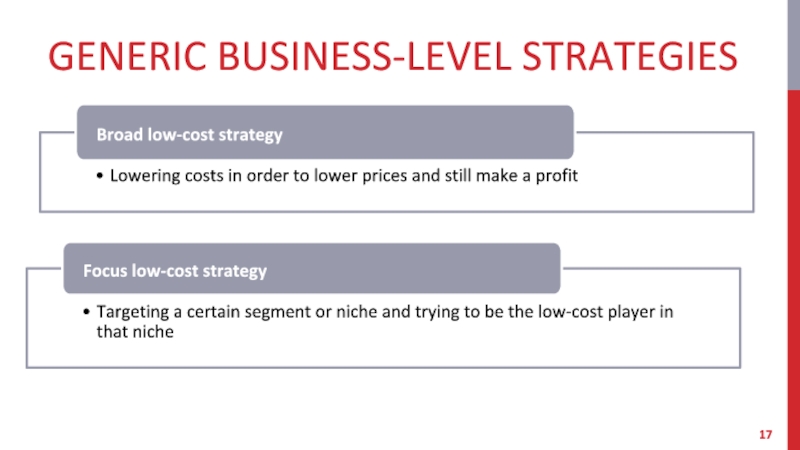
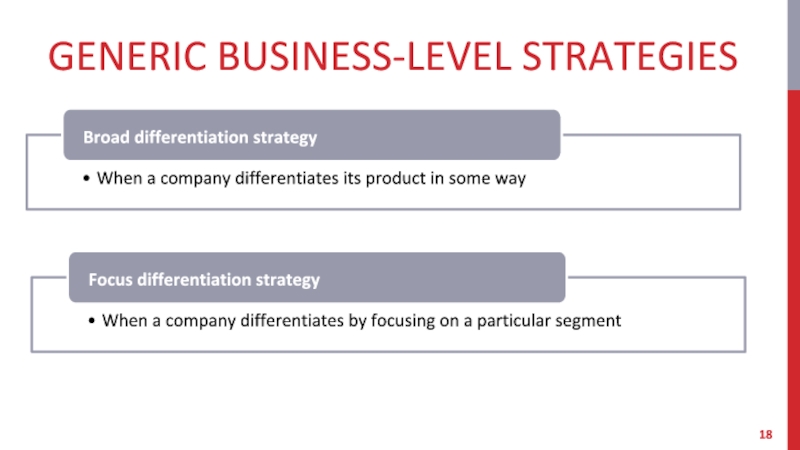

![BLUE OCEAN STRATEGYValue Innovation: Creating a new market spaceSouthwest Airlines[From TIME article:] Stock appreciation from](/img/tmb/1/46389/079c9a5886628a6f43dbfa196f6401e2-800x.jpg)
